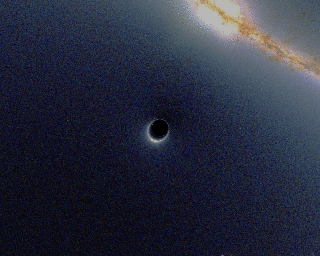This isn’t a science post. I want to use a scientific discovery to
show a principle that can be employed in many situations in sociology,
government, running companies - and yes in physics as well.
 ](http://phys.org/news/2015-09-physicists-molecules.html)
Photons interacting virtually.This article from
PHYS.org is
a little technical, but the essential point I want to make here can be
summarized simply.
](http://phys.org/news/2015-09-physicists-molecules.html)
Photons interacting virtually.This article from
PHYS.org is
a little technical, but the essential point I want to make here can be
summarized simply.
Imagine pairs of things. I could call them “photons” here, but they might be people or companies or countries. These things can’t or won’t interact with each other for fundamental reasons of their nature or because of some choice they make. Now imagine that it would be useful for these things to interact with each other. How can this be done?
The answer is to find some other things with which your things (again,
these could be people or countries or whatever) will interact.
 ](https://en.wikipedia.org/wiki/Oslo_Accords)
The Oslo Accords logo. This is a lot like the process that led to the
Oslo Accords. Countries
that wouldn’t interact with each other, but would interact with
other countries, under the right circumstances, came together and
accomplished something useful.
](https://en.wikipedia.org/wiki/Oslo_Accords)
The Oslo Accords logo. This is a lot like the process that led to the
Oslo Accords. Countries
that wouldn’t interact with each other, but would interact with
other countries, under the right circumstances, came together and
accomplished something useful.
 ](https://en.wikipedia.org/wiki/Black_hole)Black
Hole Lensing. Suppose you can’t see some thing because it’s invisible,
but it will interact with other things that you can see. Right. You
can use the visible things and the way they are visibly affected by
the invisible thing to see where the invisible thing is, what it’s
doing, or whatever. This is very commonly used in astronomy, for
example, to see black
holes. You can’t see them,
but their interactions with other things you can see are apparent.
This technique is applicable to criminal investigations, espionage,
remote sensing of weather, and way more uses than I can think of right
now.
](https://en.wikipedia.org/wiki/Black_hole)Black
Hole Lensing. Suppose you can’t see some thing because it’s invisible,
but it will interact with other things that you can see. Right. You
can use the visible things and the way they are visibly affected by
the invisible thing to see where the invisible thing is, what it’s
doing, or whatever. This is very commonly used in astronomy, for
example, to see black
holes. You can’t see them,
but their interactions with other things you can see are apparent.
This technique is applicable to criminal investigations, espionage,
remote sensing of weather, and way more uses than I can think of right
now.
These ideas are incredibly powerful. Given their broad applicability across many disciplines, I suspect they were discovered and named called many things over the years.